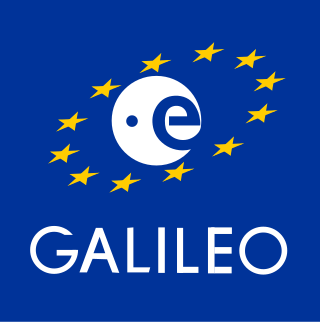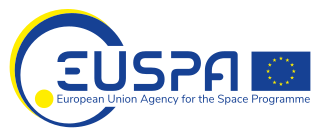
Galileo is a global navigation satellite system (GNSS) that went live in 2016, created by the European Union through the European Space Agency (ESA), operated by the European Union Agency for the Space Programme (EUSPA), headquartered in Prague, Czechia, with two ground operations centres in Fucino, Italy, and Oberpfaffenhofen, Germany. The €10 billion project is named after the Italian astronomer Galileo Galilei. One of the aims of Galileo is to provide an independent high-precision positioning system so European political and military authorities do not have to rely on the US GPS, or the Russian GLONASS systems, which could be disabled or degraded by their operators at any time. The use of basic (lower-precision) Galileo services is free and open to everyone. A fully encrypted higher-precision service is available for free to government-authorized users. Galileo is intended to provide horizontal and vertical position measurements within 1 m precision. Galileo is also to provide a new global search and rescue (SAR) function as part of the MEOSAR system.

GLONASS is a Russian satellite navigation system operating as part of a radionavigation-satellite service. It provides an alternative to Global Positioning System (GPS) and is the second navigational system in operation with global coverage and of comparable precision.

A satellite navigation or satnav system is a system that uses satellites to provide autonomous geopositioning. A satellite navigation system with global coverage is termed global navigation satellite system (GNSS). As of 2023, four global systems are operational: the United States’s Global Positioning System (GPS), Russia's Global Navigation Satellite System (GLONASS), China's BeiDou Navigation Satellite System, and the European Union's Galileo.
Augmentation of a global navigation satellite system (GNSS) is a method of improving the navigation system's attributes, such as precision, reliability, and availability, through the integration of external information into the calculation process. There are many such systems in place, and they are generally named or described based on how the GNSS sensor receives the external information. Some systems transmit additional information about sources of error, others provide direct measurements of how much the signal was off in the past, while a third group provides additional vehicle information to be integrated in the calculation process.

GLONASS-K is the latest satellite design intended as a part of the Russian GLONASS radio-based satellite navigation system. Developed by ISS Reshetnev and first launched on 26 February 2011, it is a substantial improvement of the previous GLONASS-M second-generation satellites, having a longer lifespan and better accuracy.
Kosmos 2466 is one of a set of three Russian military satellites launched in 2010 as part of the GLONASS satellite navigation system. It was launched with Kosmos 2465 and Kosmos 2464.
Kosmos 2478 is a Russian military satellite launched in 2011 as part of the GLONASS satellite navigation system.
Kosmos 2475 is one of a set of three Russian military satellites launched in 2011 as part of the GLONASS satellite navigation system. It was launched with Kosmos 2476 and Kosmos 2477.
Kosmos 2477 is one of a set of three Russian military satellites launched in 2011 as part of the GLONASS satellite navigation system. It was launched with Kosmos 2475 and Kosmos 2476.

Kosmos 2459 is one of a set of three Russian military satellites launched in 2010 as part of the GLONASS satellite navigation system. It was launched with Kosmos 2460 and Kosmos 2461.
Kosmos 2460 is one of a set of three Russian military satellites launched in 2010 as part of the GLONASS satellite navigation system. It was launched with Kosmos 2459 and Kosmos 2461
Kosmos 2461 is one of a set of three Russian military satellites launched in 2010 as part of the GLONASS satellite navigation system. It was launched with Kosmos 2459 and Kosmos 2460
Kosmos 2456 is one of a set of three Russian military satellites launched in 2009 as part of the GLONASS satellite navigation system. It was launched with Kosmos 2457 and Kosmos 2458.
Kosmos 2447 is one of a set of three Russian military satellites launched in 2008 as part of the GLONASS satellite navigation system. It was launched with Kosmos 2448 and Kosmos 2449.
Kosmos 2444 is one of a set of three set of three Russian military satellites launched in 2008 as part of the GLONASS satellite navigation system. It was launched with Kosmos 2442 and Kosmos 2443.
Kosmos 2431 is one of a set of three Russian military satellites launched in 2007 as part of the GLONASS satellite navigation system. It was launched with Kosmos 2432 and Kosmos 2433.
Kosmos 2425 is one of a set of three Russian military satellites launched in 2006 as part of the GLONASS satellite navigation system. It was launched with Kosmos 2424 and Kosmos 2426.
Kosmos 2474 is a Russian military satellite launched in 2011 as part of the GLONASS satellite navigation system.
Inside GNSS (IG) is an international controlled circulation trade magazine and website owned by Gibbons Media and Research LLC. It covers space-based positioning, navigation and timing (PNT) technology for engineers, designers, and policy-makers of global navigation satellite systems (GNSS). In the United States, GNSS is identified mainly with the government-operated Navstar Global Positioning System (GPS). InsideGNSS.com is the complimentary website of online news, events, digital newsletters, and webinars, and archived magazine articles.

The European Union Agency for the Space Programme (EUSPA) is a space agency, managing the European Union Space Programme as one of the agencies of the European Union (EU). It was initially created as the European Global Navigation Satellite Systems Supervisory Authority (GSA) in 2004, reorganised into the European Global Navigation Satellite Systems Agency in 2010, and established in its current form on May 12, 2021. EUSPA is a separate entity from the European Space Agency (ESA), although the two entities work together closely.






